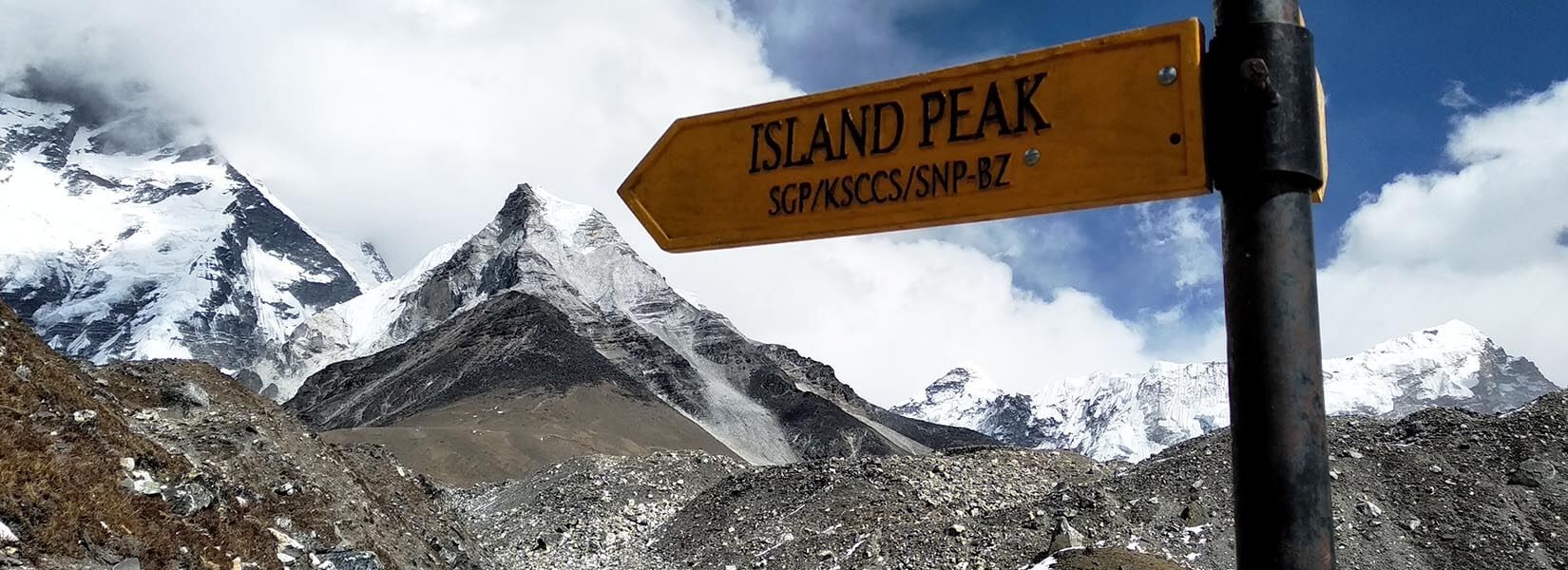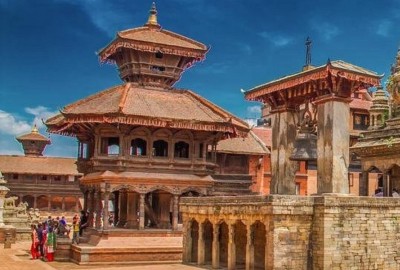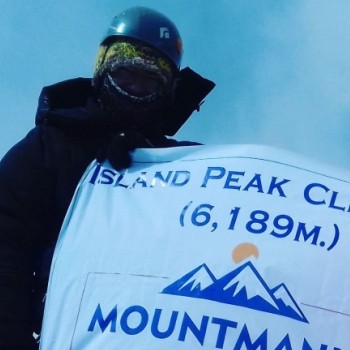Before jumping to the main topic on Island Peak Climbing. First, let’s be clear on two major terms; Trekking and Climbing.
Trekking vs. Climbing in Nepal
The main difference between trekking and climbing are height and types of equipment. Normally, the height of trekking regions ranges from 3200m to 5500m whereas peak climbing height ranges from 5500m to 6500m. Equipment needed while going for trekking are; boot, jacket, trousers, hat, gloves, socks, sunglasses, trekking pole, and others whereas equipment’s for peak climbing are; ice axe, crampons, tape slings, harness, rope, plastic, plastic mountaineering boots, snow bar, ice hammer, ice screw, light, and others.
Island Peak climbing (6,189m/20,305ft), is one of the famous climbing peaks in the Everest Region of Nepal with an impressive and highly snow-filled climbing route that rises from the Lhotse Glacier. It is situated in Sagarmatha National Park of the Himalayas of eastern Nepal. The peak was named Island Peak in 1951 by Eric Shipton’s party since it appears as an island in a sea of ice when viewed from Dingboche. It is also known as Imja Tse. This peak climbing is designed for energetic and physically fit trekkers with little or no experience in mountain expedition
5 Things To Do Before Booking Island Peak Climbing
1. Check Price:
The following table will provide a price for a specific group or number of persons for Island Peak Climbing with Everest Base Camp (20 Days):
| No. of Person | Price (Per Person) |
| 1 | USD 2400 |
| 2 | USD 2200 |
| 3-6 | USD 2100 |
| 7-9 | USD 2000 |
| 10-16 | USD 1900 |
Note: Above price can be customized according to the season.
2. Choose the Season:
An appropriate time for climbing Island Peak is as follows:
| Season | Month |
| Spring | March to May |
| Autumn | September to November |
| Winter | December to February |
| Summer | June to August |
3. Packing List:
| Gears / Equipments | Clothing |
| Harness | Jackets |
| Crampons | Woolen Hats |
| Ice Axe | Woolen Scarfs |
| Ascender | Fleece Trousers |
| Multi-LED Head Lamp | Woolen Gloves |
| Karabiners | Woolen Socks etc. |
| Rappel Device | |
| Ski Poles | |
| Slings | |
| Sleeping Bags | |
| Tent | |
| Masks | |
| Altimeter | |
| Boots, Helmet and Sunglasses, etc. | |
Besides above gears and clothing. You can also carry medical kits, personal hygiene, travel bags, personal dry foods, and others.
4. Test Physical Condition
Climbers’ physical condition should be suitable for peak climbing. Suitable in the sense that climbers shouldn’t be a heart patient and other previous diseases. In whole, climbers should be mentally and physically be prepared for peak climbing.
On part of the experience, climbers either should have beginners’ level knowledge in trekking or no experience at all. During an expedition to peak climbing, the guide will provide necessary information regarding peak climbing techniques and experiences.
5. Choose Trekking Agency
While choosing trekking agency, you should check whether that specific trekking agency is authorized to government bodies or not, should have experienced guide who have sound knowledge on trekking or climbing routes, should provide best customer support under affordable price and should also provide flexible itinerary according to your requirements such as Time, Price and Members.
Above things to do are just for guidelines which can help you to make the decision intelligently. If you are seeking any other information then you can directly contact us.









